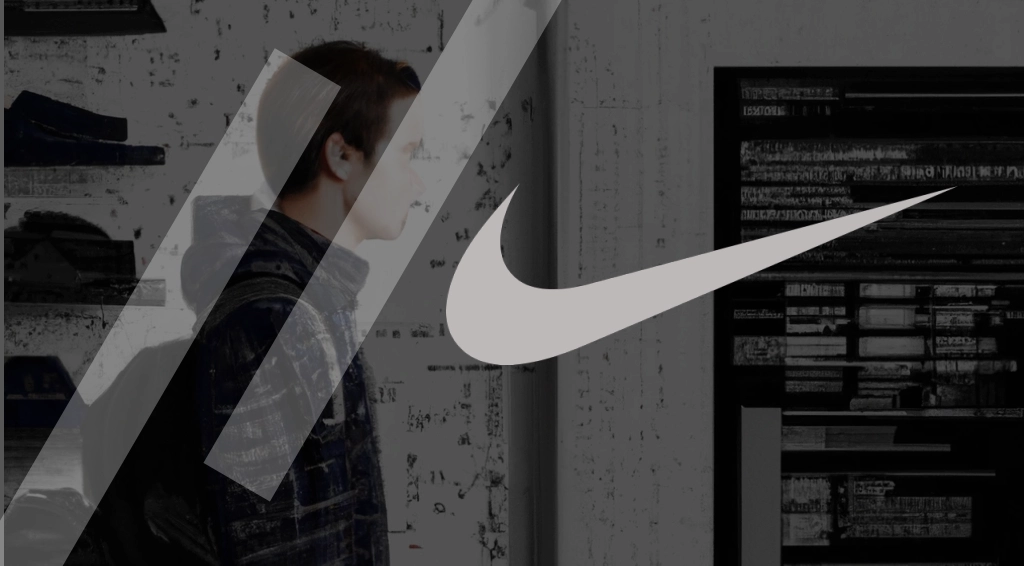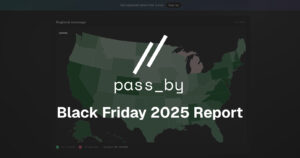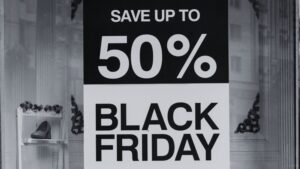Nike’s upcoming earnings call is just around the corner. After a tough start to 2024, is Nike bouncing back? For retail professionals looking to stay ahead of industry trends or investors looking to bolster their portfolios, understanding the current state of foot traffic in Nike stores can offer valuable insights into the company’s performance and future prospects.
Key Takeaways:
- Foot traffic to Nike’s US stores is up 16.2% YoY for the last fiscal period
- Store visits have grown YoY across generations, but this is most noticeable amongst Gen Alpha and Gen X visitors.
- Nike’s US YoY growth is favorable when compared to competitors such as Lululemon, Adidas and Under Armour
- Geographically, Kentucky and Rhode Island have the highest YoY increase.
Nike is a global powerhouse in the athletic industry, reaching customers in nearly every corner of the world. However, this report focuses solely on data from the United States. While we examine foot traffic and physical store performances, it’s important to remember that online sales are a significant component of Nike’s overall business strategy, driving a substantial portion of their revenue.
Nike is gearing up to release its fiscal third-quarter earnings for 2024 after the market closes on Thursday. Last quarter, Nike adjusted its full-year forecast downwards, citing broad economic challenges.
The company also indicated it expects to incur $400 million to $450 million in restructuring costs, mainly from severance due to layoffs, which will be documented in the third quarter. Back in February, Nike revealed it would lay off about 2% of its workforce, impacting over 1,600 employees, as a cost-cutting measure. Moreover, in December, the company disclosed plans to slash $2 billion in expenses over the next three years.
Let’s explore what’s happening on the ground, one step at a time. All data in this report concerns Nike’s latest fiscal period and is based on the YoY % increase over the same period of the previous year.
Headline Stats – Strong YoY growth for US based stores
Total visits per store: A 16.20% increase indicates growing consumer interest and engagement.
The recent 16.20% surge in total visits per Nike store is a promising indicator of the brand’s growing consumer interest and engagement. This upward trend in foot traffic suggests that more people are walking through Nike’s doors, exploring the product offerings, and likely making purchases. Such an increase not only bodes well for sales but also underscores Nike’s effective marketing strategies and possibly enhanced in-store experiences.
However, it’s crucial to note a slight caveat in Nike’s otherwise positive performance. When examining the average daily visits per store, Nike posted a slight decrease in average visits per store when comparing this fiscal period to the one previous.
This is expected as the previous period includes key holiday events and some of the busiest retail periods of the entire calendar.
Generational Insights – Consistent growth across the board
Nike’s recent performance indicates a significant increase in foot traffic across multiple demographics, reflecting the brand’s diverse appeal and successful marketing strategies. Let’s break down the specifics:
Generation Alpha: Experiencing a remarkable 17.02% increase in foot traffic, Nike has clearly resonated with the youngest consumers. This growth is likely spurred by family shopping excursions, where parents are choosing Nike for their children, indicating brand loyalty across generations.
Gen Z and Millennials: Both of these tech-savvy and trend-conscious groups have shown impressive engagement with Nike. Foot traffic among Gen Z rose by 15.80%, while Millennials saw a slightly higher increase of 16.47%. These figures underscore Nike’s effectiveness in captivating younger audiences through digital engagement and trend-setting products.
Gen X and Boomers: Not to be outdone, older demographics also show robust growth. Foot traffic among Gen X registered an 18.04% increase, demonstrating Nike’s ability to appeal to a mature, possibly more affluent demographic. Similarly, Boomers reflected a solid increase of 14.91%, indicating a successful outreach strategy that engages older shoppers who may value quality and reliability in their purchasing decisions.
Overall, these increases across diverse age segments highlight Nike’s broad market appeal and effective marketing strategies, suggesting a positive outlook ahead of their earnings call.
Income analysis – Median income of shoppers has grown slightly
Observing the trends in the median income of Nike’s store visitors, a clear upward trajectory emerges. June to August 2023 saw visitors with a median income of $79,456, rising to $82,326 by the March-May 2024 period. This incremental growth highlights the increasing affluence of Nike’s customer base.
Why does this matter? High-income shoppers are integral to Nike’s sustained success and future growth in the U.S. market. These consumers typically exhibit greater purchasing power and a willingness to invest in premium and exclusive products. By effectively engaging this demographic, Nike not only boosts its revenue but also fortifies its brand as a leader in the high-end apparel market.
Catering to high-income customers requires a focused strategy, including enhanced in-store experiences, exclusive releases, and personalized marketing. As Nike continues to rise in popularity among affluent shoppers, their ability to capture and retain this segment will be pivotal in ensuring robust growth and market leadership.
Regional Performance
Top-performing states: When it comes to Nike’s regional performance, some locations are clearly outshining others. For instance, Kentucky has shown significant growth, boasting an impressive 46.59% increase in foot traffic. Rhode Island takes an even larger leap with a substantial 49.83% growth. These numbers suggest that Nike’s regional strategies, perhaps including targeted marketing and tailored store experiences, are resonating well with consumers in these states.
Underperforming areas: On the flip side, not all states are showcasing the same positive metrics. Alabama, for example, has experienced a sharp decline with a -41.44% drop in foot traffic. Wisconsin hasn’t fared much better, recording a -10.00% decrease. These figures highlight potential areas for strategic review and improvement. Nike may need to revisit their approach in these states, considering factors like local market preferences and competitive landscape.
Regional trends: It’s evident that regional performance is not solely a result of internal strategies but also influenced by external factors. Economic conditions, for instance, play a pivotal role. States with strong economic growth may naturally see higher consumer spending and, consequently, increased store visits. Local events can also drive foot traffic, such as sports competitions or community gatherings where Nike’s presence is visible. Additionally, store locations themselves—whether in prime shopping districts or easily accessible suburban areas—can significantly impact foot traffic numbers. Understanding these regional trends is crucial for Nike as they formulate and adapt their strategies to optimize performance across different areas.
How does Nike compare to it’s Luxury Aparel competitors?
Looking at the provided data, it’s clear that Nike is currently outperforming its competitors when it comes to average total visits per store. With an impressive 16.20%, Nike’s foot traffic is significantly higher than that of Lululemon, Adidas, and Under Armour, reflecting a strong consumer interest and engagement with the brand.
Interestingly, Lululemon, despite being renowned for its loyal customer base, recorded just a 1.68% increase during the same period. This figure is notably lower compared to both adidas at 5.93% and Under Armour at 2.68%. Such differences highlight distinct consumer behaviors and brand traction within the market.
Moreover, it’s worth noting that both adidas and Under Armour have managed to capture moderate foot traffic at 5.93% and 2.68%, respectively. While not as high as Nike, these numbers suggest a steady flow of visitors, hinting at consistent performance in their retail operations.
Much of the commentary around Nike and it’s competitors has stressed that these brands are coming for Nike’s market share. But our foot traffic data shows that in the US at least, Nike is remaining a popular destination for shoppers.
Comparison to other brands – generational outlook
As you delve into the numbers, a pattern begins to emerge that highlights Nike’s consistent dominance across all age groups. Nike leads with impressive traction among Gen Z, Millennials, Gen X, and Boomers, showcasing its broad appeal and effective marketing strategies. Notably, Nike’s foot traffic peaks with the Gen X demographic, where it captures 18.04%, demonstrating a strong connection with this generation.
Part of Nike’s robust market position can be attributed to their strategic marketing campaigns that have significantly contributed to increased foot traffic. Nike continues to put significant effort into professional athletes, sponsoring the biggest athletes across the world’s most popular sports.
Nike’s consistent dominance across all age groups, especially Gen X, is supported by its strong financial performance, strategic investments in direct-to-consumer channels, and robust marketing efforts. Despite regional challenges, Nike’s innovative approach and market adaptability have reinforced its leading position in the athletic apparel market.
What next for Nike?
Based on the foot traffic insights in this report Nike has garnered substantial increase in US store visits, showcasing a strong brand presence. The generational breakdown indicates a growing interest among younger audiences, which could be pivotal for long-term growth. Regionally, Nike’s consistent performance highlights potential for expansion into emerging markets. When compared to competitors, Nike still leads in several key metrics, proving its market resilience.
After the warning shots fired at the last earnings call, Nike could leverage this growth by deepening engagement with Gen Z through targeted marketing strategies and innovative product lines. Additionally, expanding its e-commerce capabilities and exploring underpenetrated regions might foster continued growth. They should also sustain their competitive edge by continually adapting to market trends and consumer preferences, ensuring they remain at the forefront of the athletic wear industry.





